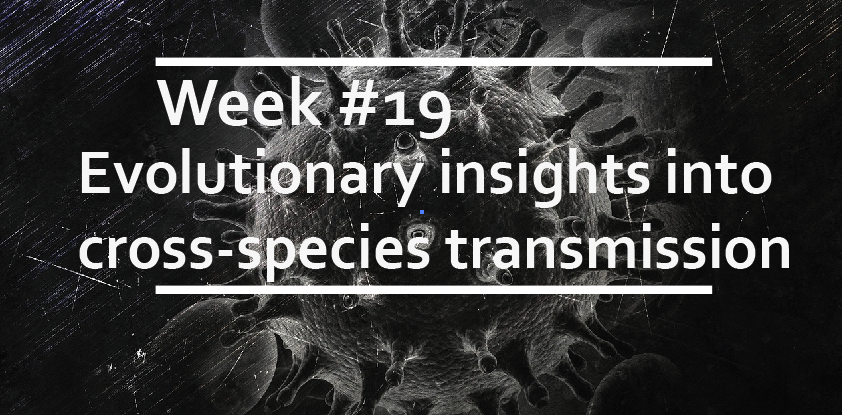Evolutionary insights into cross-species transmission
Pathogens emerging from the wild constitute one of the major risks to human and animal health. Beside occasional spillovers, where pathogens can accidentally infect a new host, taxon shifts involve a degree of pathogen adaptation that might culminate in its ability to proliferate and thrive in an entirely new population.
Fortunately for us, there are several barriers to new host transmission, although – unfortunately for us! – they are not always insurmountable. The first barrier is a lack of opportunity for transmission, generally because the pathogen and the new host do not share the same ecological space. This is also the barrier that we are more likely to break through a shift in customs and practices: uncontrolled urbanization, close contact between human and animals, global trade and travel, as well as global warming, are all contributing to a rapid spread of pathogens that would have been previously confined to a limited territory. Another barrier to new host transmission is the lack of expression of the correct set of receptors and host proteins necessary for entry into the new host.
However, if these barriers are broken, pathogens have an opportunity to try something new…
It is not all about mutations
We currently have quite a lot of information on the transmissible genomic changes that pathogens might undergo: mutations, reorganization, and gene transfers are easily identified by genomic sequencing and population genetic methods, and for viruses that mutate rapidly and with limited proof-reading (such as RNA viruses), this is likely to be an important strategy of host adaptation. However, for several more complex pathogens, this is not the fastest way to adapt, as the accumulation of enough correct mutations to allow the shift takes a long time. For all of these pathogens, host shift seems to be more dependent on phenotypic plasticity, which is the ability to produce more than one phenotype from the same genome when exposed to different environments (for instance through epigenetic variations or different gene expression patterns); or on cryptic genetic variation, which is the standing genetic variation within the pathogen population that is not seen under normal conditions (as it doesn’t contribute to the phenotype), but that is available to modify a phenotype that arises following environmental changes. Cryptic genetic variation is important for the host shift of many RNA viruses: for instance, changes in the RNA polymerase of avian flu that enhance its activity in mammalian cells favor cross-species transmission, as well as variations in the ability to bind sialic acid or glycans in different species.
De Fine Licht presents the two standard models of adaptations that allow taxon shift, and suggest that a third might be equally important.
- Ecological fitting via resource tracking
This first model describes the situation in which the new host is similar to the original host, at least in the tracts that the pathogen exploits for its life cycle and spread. Adaptation is simply due to the exploitation of conserved tracts.
- Ecological fitting via adaptive plasticity
In this second model, the new host is different from the original for tracts that are important for pathogen replication, but this difference unlashes the cryptic genetic variation described above, providing natural selection with new material to shape the evolution of relevant tracts. In this model, the new changes will be directed towards improving pathogen fitness in the new host until the best combination is reached.
- Ecological fitting via non-adaptive plasticity
This third model is what the author suggests to be another critical determinant of evolution. Although also based on adaptation within the cryptic genetic variation, differently from adaptive plasticity, the consequence of non-adaptive plasticity is a reduction (rather than an increase) in pathogen fitness. This apparent disadvantageous outcome is generally compensated for by other benefits, such as enhanced transmission within the population.Non-adaptive plasticity is likely to be more important for eukaryotic pathogens, where genome changes are slower than for viruses or bacteria, and epigenetics or transcriptional regulation might be more important for evolution, also explaining the wide host range of certain parasites. However, non-adaptive plasticity might also be an important determinant of the host shifts of RNA viruses with high rates of genetic mutations.
Outlook
When attempting to understand how a change in the environment can induce pathogen adaptation, De Fine Licht stresses the importance of understanding the transcriptional profile of different pathogens, infecting different hosts, in different conditions. Equally, we suggest that adaptation in host cells that have been knocked-down for a specific cellular protein might provide important information on critical determinants of host-pathogen interaction. Further knowledge of pathogen evolution and adaptation might not help us predict what is coming next or when. However, such knowledge provides important information on the key host proteins and pathways involved in infection. In turn, this can identify new therapeutic targets that might be fundamental for the replication and spread of viruses.
Equipped with state-of-the-art high-content and high-throughput imaging facilities and virology expertise, Virology Research Services can assist with phenotypic screenings and assays addressing cellular pathways and proteins important for infection. Also, through mode-of-action studies, we can help characterize new mechanisms of cell-virus interaction. If your project involves screening and target identification, please contact us to find out how we can help.




